Jeongjae Head House / 정재종택
11.7Km 2025-08-12
경상북도 안동시 임동면 경동로 2661-8
+82-10-8590-0625
Boasting more than 300 years of tradition, Jeongjae Traditional House is the head house of Ryu Chi-myeong (pen-name: Jeongjae), who inherited the study of Togye Yi Hwang (1501-1570), one of the two most prominent Korean Confucian scholars of Joseon. The old house features the characteristic construction elements of a Joseon hanok, including the stylobate, wooden pillars, toenmaru (the narrow wooden porch running along the outside of the building), tiled roof, and other structures, and commands an open view of Imha Lake. The house was originally built by Ryu Gwan-hyeon, the great-great-grandfather of Ryu Chi-myeong, in 1735 (the 11th year of the reign of King Yeongjo of Joseon) in the village of Handeul in Imdong-myeon, Andong-si, Gyeongsangbuk-do, but it was relocated to the foot of Guamsan Mountain in 1987 when Imha Dam was built and the surrounding area was submerged as a result. The house consists of the daemunchae (gate building), jeongchim (a ‘ㅁ’-shaped house with a tiled roof), haengnangchae (servants’ quarters), a shrine, and a pavilion. The sarangchae (men’s quarters) is clearly visible, while the anchae (women’s quarters) is concealed within the house. The sarangchae has a sarangmaru (wooden floor), a large sarangbang room, a small sarangbang room, and there is a small maru between the two rooms. The buildings of the sarangchae and anchae are clearly divided into segregated spaces for men and women according to Confucian tradition. The anchae has a daecheongmaru (large wooden floor) in the middle; a main room, kitchen, and toilet on the right; and a numaru (upper floor) and sangbang (upper room) on the left. The small side door of the main gate links to the door by which to enter the anchae, which has a small vegetable garden. Manujeong Pavilion (Gyeongsangbuk-do Cultural Heritage Material No. 37) is a half-hipped roof building with single-layered eaves located on the left side of the house outside the main gate. It is the place where Ryu Chi-myeong used to teach his students, and consists of a large maru and a guest room. The pavilion is also surrounded by the beautiful scenery of Imha Lake, mountains, and chestnut trees. Jeongjae Traditional House provides two special experience programs: Making Songhwaju, which is the Ryu family’s home-brewed liquor (15 to 18 degrees) made with rice, glutinous rice, yeast, pine needles, and chrysanthemums, led by the owner’s wife (Intangible Cultural Asset No. 20); and Making Tarak, which is a fermented milk drink that has been made by the Ryu’s family for some 500 years. As the recipe for making Tarak is relatively simple, and uses yeast that is usually used to make raw rice wine like Makgeolli, people can easily make it at home. The house also runs a traditional music program designed to show participants how to play the gayageum (Korean zither with twelve strings) and sing Korean folk songs, and stages small concerts.
Maison traditionnelle Songsogotaek à Cheongsong (청송 송소고택)
11.7Km 2021-12-22
15-2, Songsogotaek-gil, Pacheon-myeon, Cheongsong-gun, Gyeongsangbuk-do
+82-54-874-6556
Il s'agit de la maison traditionnelle, dit “Hanok”, construite dans les années 1880 par Sim Ho-taek, 7ème génération de Sim Cheo-dae, le multi millionaire de l'époque du règne du roi Yeongjo (1694-1776). Cette maison est aussi connue sous le nom de “Sim Bujatjip” (maison du riche Sil).
Entourée par une forêt, la maison d'intègre harmonieusement à la nature environnante. Elle est immense, elle se compose de sept édifices et de 99 chambres. Le jardin est la première chose que vous verrez en entrant. La maison est de forme rectangulaire, c'est un bon exemple des maisons de noble de la dynastie Joseon.
C'est aujourd'hui un hébergement idéal pour les touristes qui désirent découvrir la Corée traditionnelle. Si vous y passez la nuit vous aurez l'occasion d'apprendre quelques jeux folkloriques traditionnels, comme le jegichagi, le lance-pierre, le tuho (lancer de flèches) et plus. De nombreuses familles dont les ancêtres occupaient des postes importants au cours de la dynastie Joseon vivent dans les alentours de Deokcheon .
La Forêt Geumbong (금봉자연휴양림)
13.5Km 2021-06-01
114, Hyuyangnim-gil, Oksan-myeon, Uiseong-gun, Gyeongsangbuk-do
+82-54-830-6001
La Forêt de Geumbong (금봉 자연 휴양림) est située à Uiseong dans la province Gyeongsangbuk-do. Vous pouvez voir des pommiers en fleurs au printemps, profitez de l’eau fraîche et du chant des cigales en été, du feuillage magnifique en automne, et des paysages enneigés splendides en hiver. Il existe beaucoup de sentiers de randonnée autour de la forêt Geumbong, ainsi que des promenades dans la vallée Cheongseokgol pour vous resourcer dans la nature. Egalement presents, des cabanes faites de chêne, de pin, de bouleau blanc et d'épinette.
* Adultes 1.000 wons / groupe 800 (plus de 20 personnes)
* Jeunes 800 / groupe 500 wons (plus de 20 personnes)
* Enfants 300 won / groupe 200 wons (plus de 20 personnes)
Le festival de la pomme à Cheongsong (청송사과축제)
14.3Km 2025-09-23
Songsaeng-ri, Cheongsong-eup, Cheongsong-gun, Gyeongsangbuk-do
• Centre d'appels 1330 : +82-54-1330 (coréen, anglais, japonais, chinois) • Pour obtenir plus d'info : +82-54-873-0101
Le festival de la pomme à Cheongsong est un festival d’automne plein d’événements avec un marché largement bien approvisionné en pommes de haute qualité à un prix raisonnable. Les événements incluent des compétitions, des jeux, des activités, des pièces de théâtre et bien d’autres. Tentez votre chance à l’une des compétitions (manger des pommes, fendre une image à mains nues, gourmandises au jus de pomme) ou ayez une approche plus calme des festivités en passant par les programmes d’activités (attraper des pommes, faire des savons et des produits de soins du corps à base de pommes, etc.). Il y a également une variété de jeux au thème de la pomme comme la coupe du monde de la pomme ou des jeux de fléchettes avec des pommes.
*Les pommes cultivées dans les environs de Cheongong sont connues pour leur goût supérieur et leur qualité grâce à leur environnement propre, à l’air frais de la montagne et les eaux claires et propres. Beaucoup attribuent le goût frais et juteux de la pomme à la haute différence de température quotidienne qui résulte de la haute altitude de la région.
Zootopium (주토피움)
16.1Km 2024-07-09
346-95, Gwangwang Danji-ro, Andong-si, Gyeongsangbuk-do
Zootopium est le plus grand parc animalier dans le parc Gyeongsangbuk-do. Le parc constitue une parfaite destination notamment pour que les enfants puissent découvrir plus sur la nature et les organismes vivants. Le parc propose à la fois des sections intérieurs et extérieurs tout comme des restaurants et des zones de jeux.
Confucian Land (유교랜드)
16.5Km 2024-07-09
346-30, Gwangwangdanji-ro, Andong-si, Gyeongsangbuk-do
Confucian Land, situé à Andong, est un centre d'expositions et d'activités autour du confucianisme en Corée. Le centre permet de découvrir les enseignements de confucianistes historiques comme Toegye Yi Hwang et Yulgok Yi I, mais aussi de découvrir des instruments traditionnels comme le gayageum ou encore le haegeum.
Dalgi Yaksutang (Source d’eau minérale) (달기약수탕)
16.6Km 2024-12-18
16, Yaksu-gil, Cheongsong-gun, Gyeongsangbuk-do
+82-54-870-6111
Située à seulement 5 minutes de Cheongsong-eup, la source de Dalgi Yaksutang (« Yaksu » signifie en coréen « eau médicinale ») est l’une des trois premières « Yaksu » de Corée en terme de qualité de l’eau. L’eau la source jaillit à 10 endroits différents dans la vallée et les ruisseaux se rejoignent à la chute de Dalgi sur le mont Juwang. L’eau coule toute l’année ; elle ne gèle pas en hiver et s’écoule librement même pendant les périodes de sécheresse. Même si l’eau n’a pas de saveur ou de couleur particulière, le riz bouilli dans cette eau spéciale prend une couleur bleuâtre et sa texture devient collante. L’eau contient du carbone naturel et son goût fait penser au soda sans sucre ni saveur. Elle contient de nombreux minéraux tels que le carbone ou le fer, et on dit qu’elle est efficace contre l’anémie, les troubles digestifs et les irritations de la peau.
Le parc national de Juwangsan est l’une des principales destinations touristiques à proximité. De nombreux visiteurs viennent y voir ses formations rocheuses uniques et ses chutes d’eau. Non loin des sources se trouvent aussi quantité de restaurants spécialisés dans le Baeksuk, un ragoût de poulet farci dont le bouillon est fait d’eau médicinale.
Kase Hotel (formerly Andong Kase)/ 케이스호텔((주)안동케이스)
17.9Km 2025-08-13
60-16, Gangnam 2-gil, Andong-si, Gyeongsangbuk-do
+82-54-857-0007
This 8-story hotel is located about 15 min by car from Andong Station and Andong Terminal. Its riverside location at Nakdonggang River offers guests an opportunity to take a walk along the river. There are 42 rooms in total, in seven types, all furnished with elegance in mind with low-saturation walls, gray curtain, and gold-framed furniture. All rooms have Netflix streaming access. Family Room, Suite Party Room, and Luxury Party Rooms have refrigerators, induction stoves, microwave ovens, and kitchen sinks for cooking. These rooms also have a mini swimming pool for children, making them especially popular in summer. Luxury Party Room, which can accommodate up to 8 guests, has a living room separated from the bedroom, allowing easier management of space. Both rooms also have a TV. Andong’s tourist sites, such as Imcheonggak House, which is Treasure No. 182 of Korea, Andong Jjimdak Alley, and Woryeonggyo Bridge is reachable by car in 10 min.
Musée folklorique d'Andong (안동민속박물관)
18.0Km 2021-07-13
13, Minsokchon-gil, Andong-si, Gyeongsangbuk-do
+82-54-821-0649
Le musée municipal folklorique de Andong vous permet de découvrir la culture confucéenne et divers aspects de la vie quotidienne dans un cadre authentique, tout en vous proposant de participer vous-même à des jeux folkloriques.
Le musée comporte trois salles d’exposition.
La première vous montre le parcours de la vie allant de la naissance jusqu’à l’enfance. Puis, dans la deuxième salle sont exposées les étapes suivantes comme le passage à l’âge adulte, la mort et les funérailles. Enfin, la troisième salle représente la vie quotidienne et des jeux traditionnels en miniature.
Le nombre d’articles conservés dans ce musée s’élève à 3.700, y compris des anciens outils agricoles et métiers à tisser. Vous pourrez également regarder des documentaires sur ces sujets dans une salle de projection.
Après avoir visité le musée, vous pourrez aussi vous détendre en plein air : un parc a été aménagé avec des maisons folkloriques et des trésors culturels près du barrage. Ce parc vous donnera un aperçu de la vie dans la région avec notmament des maisons au toit de paille et aux murs de terre, un moulin à eau, etc..
Village folklorique d'Andong (안동민속촌)
18.0Km 2023-04-26
Seonggok-dong, Andong-si, Gyeongsangbuk-do
+82-54-852-6800
Ce village traditionnel faisait autrefois partie du musée folklorique de Andong qui fut submergé après la construction d’un barrage. Cet ensemble de maisons en toit de chaume fut alors deplacé vers son site actuel.
De nos jours l’entrée est parée de deux totems représentant des visages humains. A proximité on y trouve un monument dédié à Lee Yuk-sa, un poète et militant du mouvement d’indépendance (1904~1944). Son poème le plus connu, Gwangya (la plaine sauvage) est inscrit sur le monument.
Une colline situé derrière ce monument mène au site de tournage du feuilleton historique 'Taejo Wanggeon' basé sur la vie du roi Taejo. En raison de son passé la région de Andong sert régulièrement pour des tournages de feuilletons. Lorsque le roi Taejo fonda la dynastie Goryeo (918~1392) les clans locaux prirent son parti et contribuèrent à renforcer l’influence du roi dans la région de Andong. Une vingtaine de bâtiments de l’époque comprenant les locaux réservés à l’administation, la prison et des habitations.
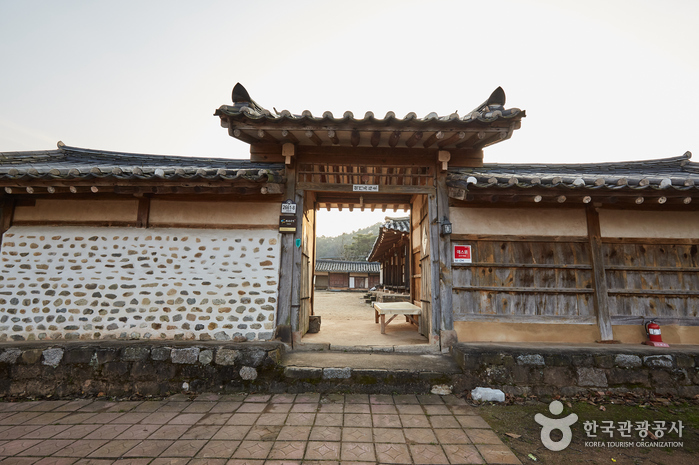
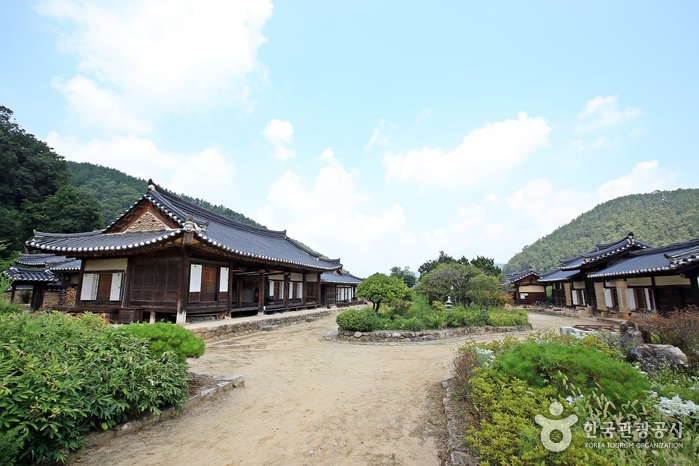
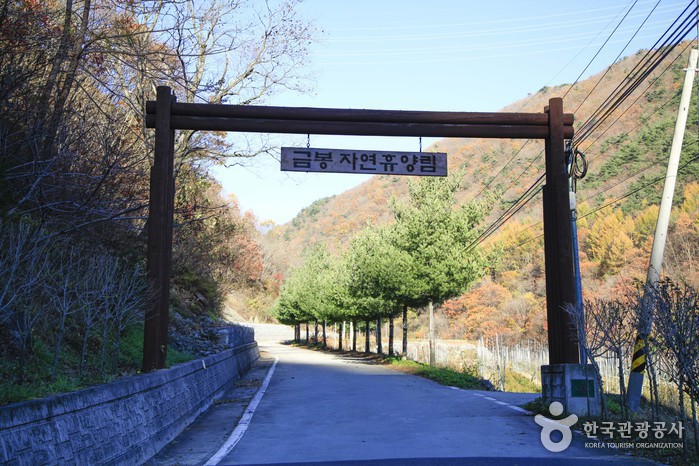
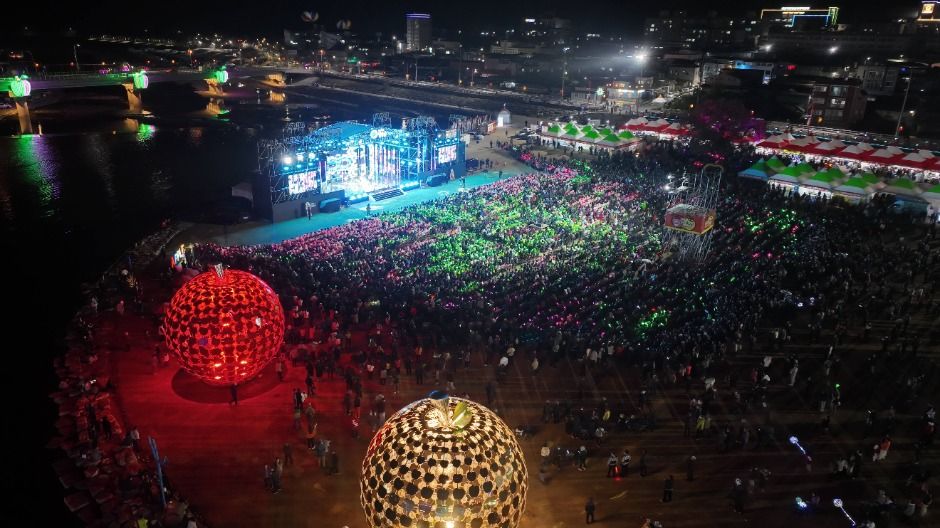

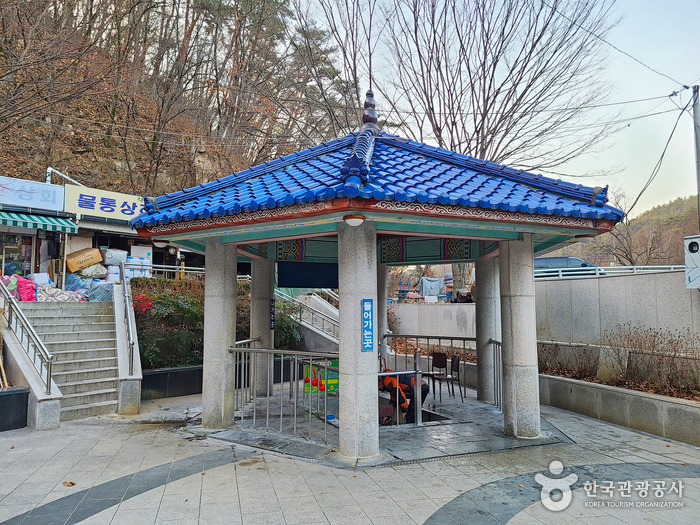
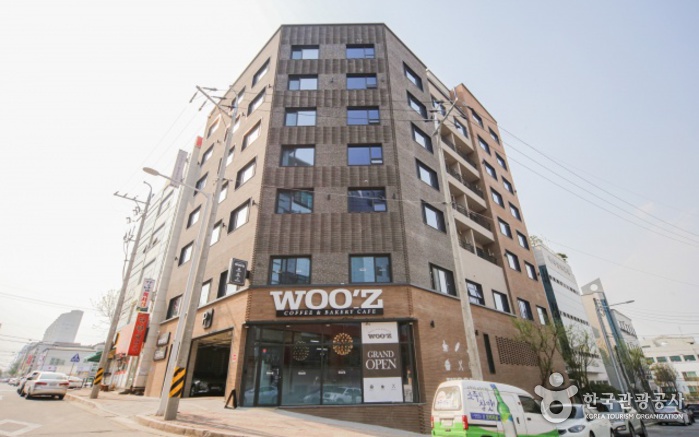
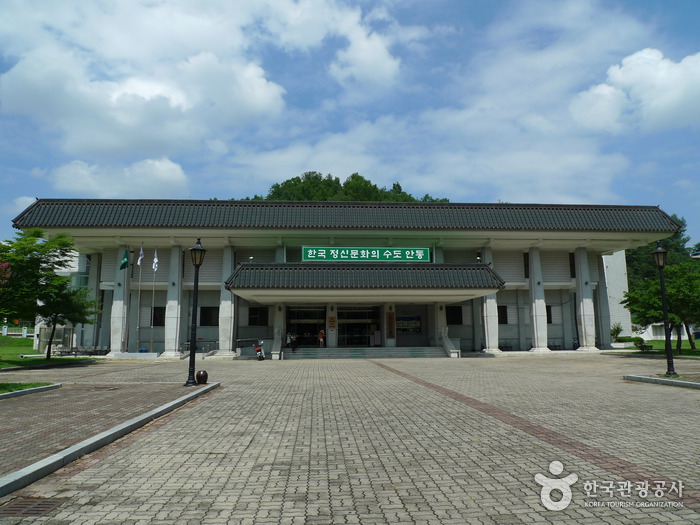
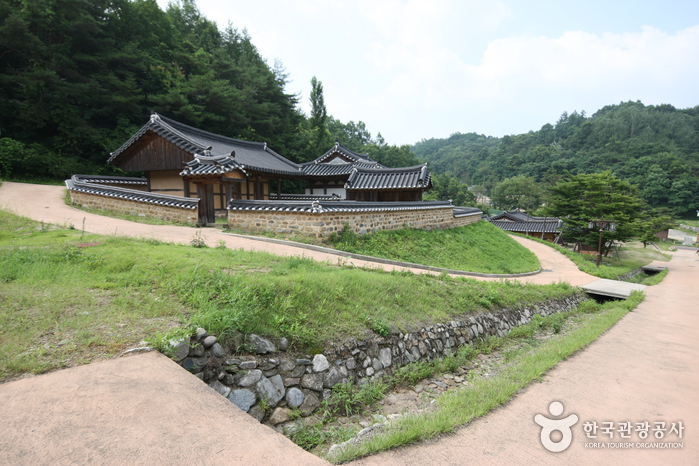
 Français
Français
 한국어
한국어 English
English 日本語
日本語 中文(简体)
中文(简体) Deutsch
Deutsch Español
Español Русский
Русский